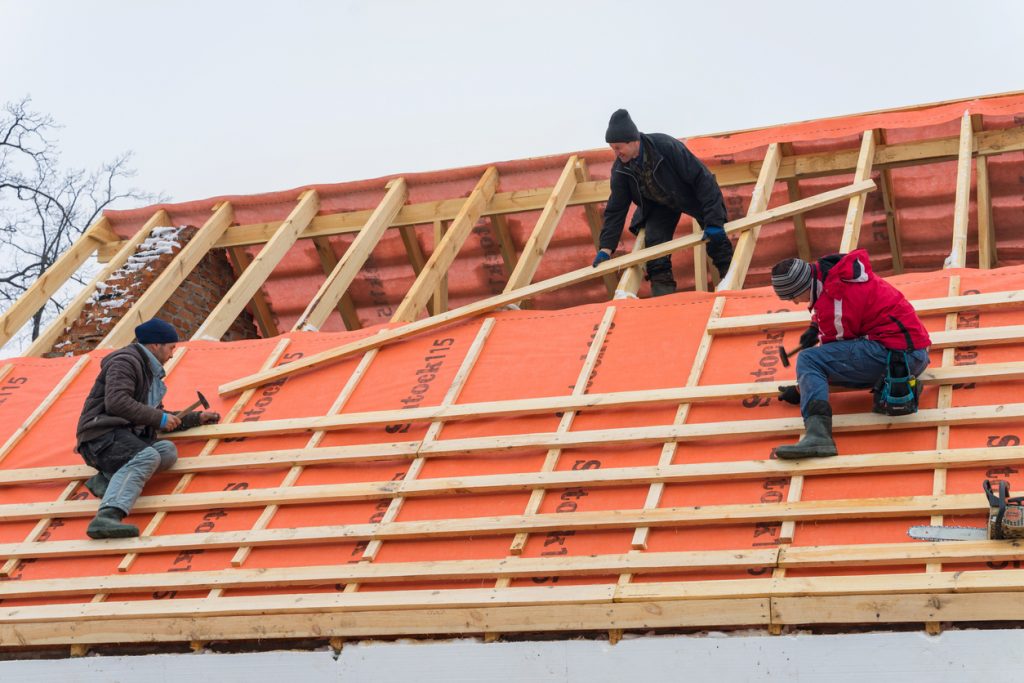As winter settles in, your roof becomes a potential refuge for wildlife seeking shelter from the cold. While it’s natural for animals to seek warmth, their presence on your roof can lead to various issues. From squirrels to birds and more, it’s essential to take proactive steps to protect your roof and the creatures seeking solace. Ainger Roofing, a roofing company in Barrie, shares a guide on safeguarding your roof from winter wildlife intrusions.

1. Squirrel Prevention: Sealing Entry Points
Squirrels are adept climbers and can easily find their way onto your roof. To prevent them from making a cozy home in your attic, inspect your roof for any entry points. Seal gaps, cracks, and openings in the roofline, fascia, and soffits. Use materials like wire mesh or steel wool to block potential entryways.
2. Trimming Overhanging Branches: Squirrel Deterrent
Overhanging branches provide convenient pathways for squirrels to access your roof. Trim branches that are close to or touching your roof to discourage these agile creatures. This not only protects your roof but also reduces the risk of squirrels finding their way into your attic.
3. Bird Deterrents: Installing Protective Devices
Birds seeking refuge on your roof can lead to issues such as nesting and droppings. Install bird deterrents like spikes, nets, or repellent devices to discourage them from landing or nesting on your roof. These measures are humane and effective in preventing bird-related problems.
4. Inspecting for Nests: Early Intervention
Winter is a common time for birds to seek shelter and build nests. Regularly inspect your roof, especially in nooks, corners, and vents, for signs of nests. Early intervention prevents nesting-related issues and ensures your roof remains free from unwanted avian occupants.
5. Securing Trash Bins: Raccoon Resistance
Raccoons are opportunistic creatures that can cause damage to roofs in their quest for food. Secure your trash bins with tight-fitting lids to discourage raccoons from foraging on your property. A well-sealed trash area reduces the likelihood of attracting these nocturnal visitors.
6. Chimney Caps: Protecting Entry Points
Chimneys are enticing entry points for wildlife, including birds and small mammals. Install chimney caps to prevent animals from entering and nesting in your chimney. This not only protects your roof but also ensures proper ventilation and prevents potential fire hazards.
7. Professional Pest Control: Timely Intervention
If you notice signs of wildlife on your roof or suspect an infestation, seek professional pest control services. Wildlife experts can assess the situation, safely remove any animals, and implement preventive measures to keep your roof critter-free.
8. Secure Roof Vents: Adding Protective Screens
Roof vents can be vulnerable points for wildlife entry. Install protective screens or covers over roof vents to prevent animals from accessing your attic space. These screens allow proper ventilation while acting as a barrier against unwanted guests.
9. Regular Roof Inspections: Early Detection
Conduct regular roof inspections to catch any signs of wildlife activity early on. Look for droppings, nesting materials, or any structural damage that may indicate the presence of animals. Early detection allows for prompt intervention and prevents potential roofing issues.
10. Consideration for Wildlife: Humane Solutions
When implementing preventive measures, consider humane solutions. It’s important to respect wildlife and their natural behaviors. Choose deterrents and preventive measures that discourage animals without causing harm, ensuring a harmonious coexistence.
Conclusion: Winter Harmony with Wildlife
Protecting your roof from wildlife in winter requires a balance between safeguarding your home and respecting the needs of the creatures seeking shelter. Roofers in Barrie say by taking proactive measures, such as sealing entry points, installing deterrents, and conducting regular inspections, you can create a roof that remains secure and free from unwanted animal intrusions. Striking this balance ensures a harmonious winter season for both you and the wildlife around your home.

